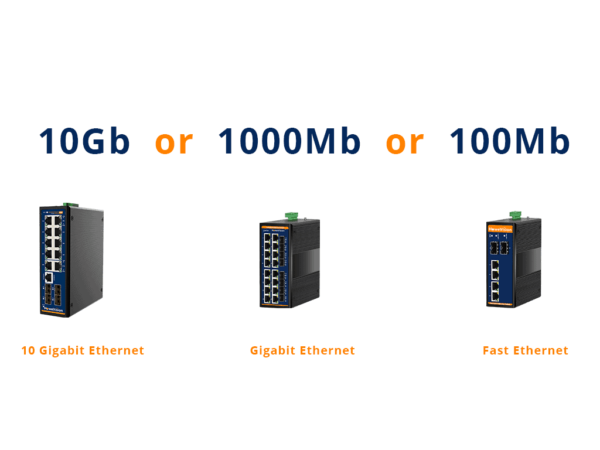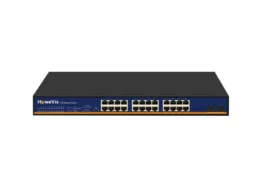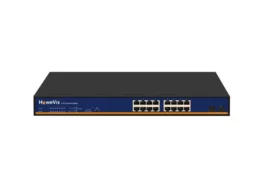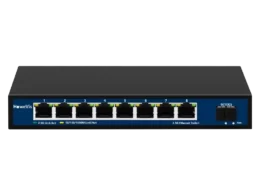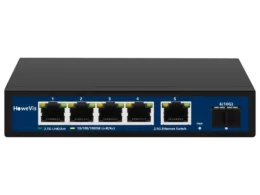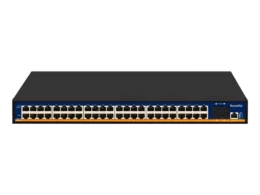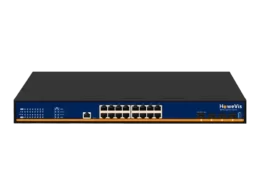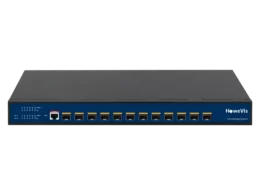POE (Power over Ethernet) is a modern technology that has gained ground over the years; however, few people are drawn back by the volume of conflicting or outdated information available on the tech. Howevision is rich with any PoE equipment combined with up-to-date details on POE. In this context, I will be discussing extensively how much speed a POE switch can provide.
Power over Ethernet (POE) technology transmits data at 10/100/1000 Mbps and power allocations of 15W, 30W, 60W, and up to 90W to systems over Cat5e and Cat6 Ethernet lines, for a limited distance of 100m.
In POE devices, a PoE switch delivers data and power supply through network wires such as Cat5, Cat5e, and Cat6. Using Devices like VoIP phone devices or IP cameras for safety is highly popular and shared in our society today. This article will explore how much speed POE can provide to any devices connected to the switch.
How Much Speed Will POE Switch Provide For My Devices?
Using an IP camera as a case study in this section: Once we set up our IP camera system, the surveillance will be working 24/7, a standard data exchange. If our PoE bandwidth is not large enough, we might be experiencing the video not loading constantly. The typical bandwidth of POE switches is 10/100/1000 Mbps. You can see the bandwidth has to be road-wide, and why is the route on the Ethernet? The data from the IP Ethernet has to travel from the PoE switch, and the road has to be wide enough.
Let’s say POE camera data comes back at 10Mbps. If it’s connected to a standard POE switch (A normal POE switch is 100Mbps), it can quickly receive data of 10Mbps. Our IP camera system will constantly be adding more cameras; what happens when multiple devices are connected? It’s like a simple addition. One camera is 10Mbps, and two cameras are 20Mbps. After several devices are added and moving through the same POE switch, the Mbps becomes higher. If the data received by the switch is over 100Mbps, then the 100Mbps cannot let all the data through at that time and probably cause a traffic jam. The PoE Switch is like a Tollgate when there’s significant traffic; they allow the car in the front row to go first, then the others can slowly follow. If your service requires connecting multiple devices to the POE, it’s advisable to choose 1000Mbps, which should resolve all the traffic issues.
It’s important to note that when you have multiple users watching a feed of a 10Mbps IP camera, the POE switch will receive more than 10Mbps data from the camera, depending on how many users are watching. The IP camera video feed also sends back more Mbps when changing view feeds. The data received by the POE switch is more when the image is constantly moving, i.e., one or more people walking in front of the camera. Camara feed is like taking a photo; you get the same result when the object is not moving and vice versa.
Scalability
PoE technology simplifies and speeds up adding, moving, changing, or temporarily deploying security cameras. Businesses and security professionals no longer have to wait for surveillance system updates and network alterations to be completed. The technology delivers more agility and flexibility when working on needed networks and installing more PoE systems. In a nutshell, PoE technology allows for easy scalability.
Can POE Switch Improve My Data Speed?
Data speed is rapidly taking over and has caused PoE technology to become so ingrained in network connectivity. There is an increasing demand for more incredible data speeds due to faster upload and download rates and consistent connectivity. Using Cat5 and Cat6 ethernet cables together speeds up the POE switch to 1Gbps, making it perfect for most POE devices.
Well, the good news is the new IEEE 802.3bz standard now allows more data speed of up to 2.5 to 5bps over a distance of 100 meters, intending to achieve 10Gbps shortly. Commonly, HD streaming needs around 400Mbps for flawless performance. PoE technology delivers more than enough data speeds to handle surveillance network access and live watching in local area networks of PCs and other devices, such as Power over Ethernet camera systems. Let’s discuss more on the ability of the new IEEE 802.3bz standard and how it has improved the speed of the POE switch.
How Will The New IEEE 802.3bz Improve My Data Speed?
The new IEEE standard permits access control layer capacity to grow from 1 Gigabit per second (Gb/s) to 2.5 Gb/s and 5 Gb/s over time.
The innovative IEEE 802.3bz Standard for Ethernet Revision: Media Access Control Parameters, Physical Layers, and Management Parameters for 2.5 Gb/s and 5 Gb/s Operation allows access layer transmission rate to develop progressively beyond 1 Gigabit per second (Gb/s) and will help address growing demands in a variety of settings and apps, such as enterprise, wireless networks, and more.
IEEE 802.3bz is an intuitive solution that addresses the demand for quicker access to constantly growing data quantities and capitalizes on earlier infrastructure investments, extending their life and optimizing value.
IEEE 802.3bz defines 2.5 Gigabit (2.5G) and 5 Gigabit (5G) BASE-T Ethernet, building on the success of 1000BASE-T and providing an upgrade route. The balanced twisted pair transmission medium in structured cabling provides Ethernet Media Access Control (MAC) characteristics, physical layer specifications (PHYs), and management objects.
IEEE 802.3bz offers cost-effective network bandwidth scaling by allowing up to five times faster without significant infrastructure improvements. Scientific and research computing, content generation and editing, industrial design and automation, machine vision, and other needs are all addressed by this corporate technology.
IEEE 802.3bz is a vital addition to Ethernet’s growing family of standards; its implementation will enable the quicker wireless connections promised by the next generation of wireless access.
In conclusion, we should prepare a POE with considerable bandwidth, especially if you have multiple devices to connect. The POE switch speed all depends on the capacity of the bandwidth.
